
views
Using Speaking and Singing
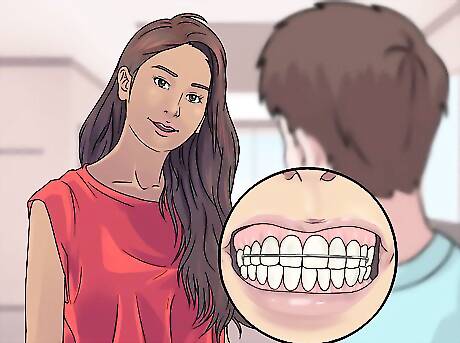
Practice speaking slowly to friends and family. To get more comfortable with talking while wearing your retainer, you should start by speaking slowly to those closest to you on a daily basis. The more you practice speaking, the more comfortable you will become with talking with a retainer. You should be able to talk with relative ease within one month to two months of getting your retainer. Your tongue will eventually adapt to the retainer. If you practice a lot, using all types of words, you will eventually be able to speak normally. As you start practicing saying words while wearing your retainer, you may notice that you spit or drool when you speak. This is normal, as your mouth will be more full of saliva than normal due to the retainer. You can use a cloth to catch any saliva around your mouth or chin when you are first getting used to wearing and talking with your retainer. The reason you may produce more spit with a retainer is because your mouth perceives it as a foreign object. Your mouth reacts to this foreign object the same way it reacts to a piece of food in your mouth — it increases the flow of saliva.

Read out loud five or more minutes a day. Another way to get your mouth used to the retainer is to practice reading out loud at least five minutes a day. You could choose to read a passage from your favorite book or pick a random section of the newspaper. Reading out loud to yourself or to someone else allows you to practice speaking and pronouncing different words. It may be a good idea to read the same passage out loud every day until you feel you can read it one time through clearly and confidently. Once you have read the passage out loud successfully, you can try a longer passage or a passage with more complex terms and longer words.

Try to sing part of a song at least once a day. Singing is another good way to help your mouth adapt to the retainer. You can sing the chorus of your favorite song to yourself in the shower or to an audience of family and friends. Maybe you choose a simple nursery rhyme or familiar tune that contains simple words. You can then practice singing this out loud once a day until you can sing the song clearly and without any issues.

Repeat words you find difficult to pronounce with your retainer. As you sing or read out loud, listen to yourself speak and note any words or phrases you may have trouble saying. This could be longer words or words with “sh” and hard “c” sounds, or also "s," "z," or "t", which require a certain position of the tongue over the retainer. You should repeat these words several times when you read them or sing them so you can practice pronouncing them. Over time, you should be able to say these challenging words properly while wearing your retainer.

Speak more on weekends. If you are shy about talking during the week at school in class or to your peers in the hallways, you should get into the habit of talking with your retainer in your mouth on weekends. On the weekends, you may walk around the house and talk to yourself or talk to your parents. It can be less intimidating to talk to an empty room or to sympathetic parents.
Caring for Your Retainer
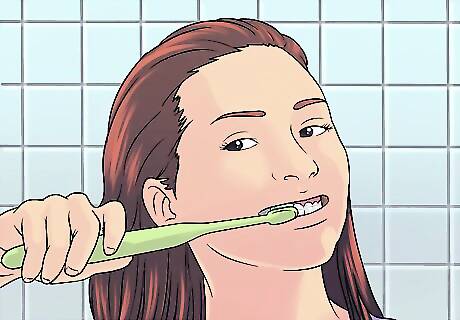
Brush your retainer at least once a day. Caring for your retainer can make it easier for you to talk while wearing it, as a clean retainer will not carry any odors or plaque build up. Odors and plaque build up can make it difficult to feel comfortable wearing the retainer and having in depth conversations with others. Keep your retainer clean and appealing by brushing it with toothpaste and a toothbrush at least once a day. Ask your orthodontist about cleaning your retainer, as some retainers should be cleaned with water and a toothbrush, rather than toothpaste. Some toothpaste, especially abrasive toothpastes, can damage certain retainers. Allowing plaque and bacteria to build up on your retainer is also harmful to your gums and teeth. If your retainer seems to be carrying a very strong odor, despite regular brushing, you can try soaking it in a carbon tablet dissolved in water. Or you can dissolving a spoon of baking soda into a glass of water and allow your retainer to soak.
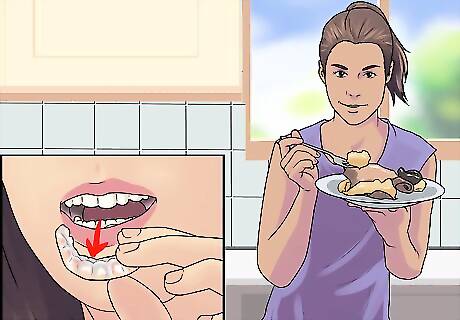
Take out your retainer only to swim or eat. In order to do its job properly, your retainer should remain in your mouth most of the time. You should only take it out at mealtimes or when you are going swimming, as you do not want the retainer to come into contact with pool water. You should talk to your orthodontist about this rule, as some doctors have additional guidelines around when you should wear your retainer. You may be advised not to wear your retainer when you are playing contact sports or any other sports that can cause injury to your teeth or could break the retainer.
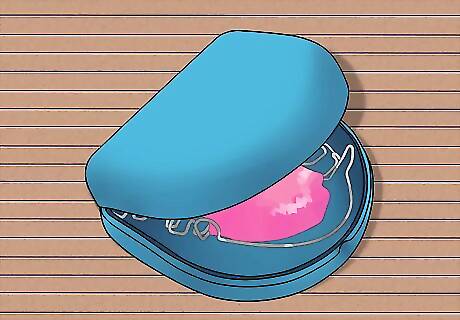
Keep your retainer in its case when it is not in use. To avoid losing the retainer or damaging it, you should put your retainer in its case when it is not in your mouth. Put the retainer case in your backpack so you have it when you go to school and need to remove your retainer to eat or make sure it is always with you when you go to swim practice. Storing the retainer in its case will ensure it is safe and ready to use. The case should have a few holes to allow air to flow in and keep your retainer dry. A completely sealed case promotes the growth of bacteria by preventing your retainer from drying.
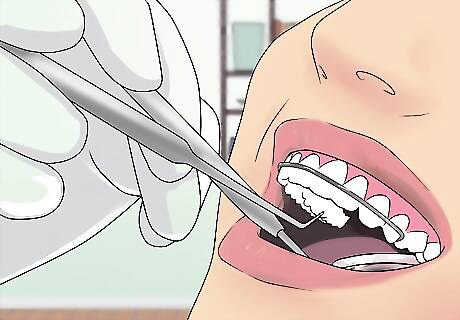
Have your orthodontist adjust your retainer if it is uncomfortable or tight. If you have been practicing speaking with the retainer for over a month now and are noticing it is still uncomfortable and tight in your mouth, you may want to schedule a follow up appointment with your orthodontist. Your orthodontist may suggest a different retainer for your mouth or adjust the one you have so it fits your mouth better. Some retainers can rub against your mouth due to a misplaced wire and your retainer may feel more comfortable with only a minor adjustment by your orthodontist.



















Comments
0 comment